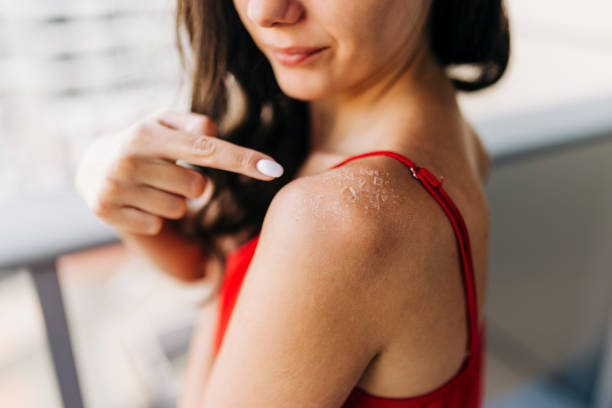SUN AWARENESS WEEK: 5 Things You Should Be Doing When It Comes To Sun Protection

This week is Sun Awareness Week (started Monday 1st May) and is a national campaign aimed at raising awareness around skin protection and the dangers of sun exposure. With sun protection queries being searched over 400,000 times every summer, it’s clear there is education to be done around how the nation can protect themselves from damaging UV rays.
A study revealed that 1 in 3 Brits (35%) burn their skin every year in the UK, with a further 46% burning whilst abroad. Although unwanted cloud and rain is forecast for the next few days, skin experts have warned that damaging rays easily penetrate the clouds so it’s important to protect yourself despite it seeming cloudy!
With 80% of premature ageing caused by UV damage, West Yorkshire aesthetics clinic Evolve Medical are sharing their 5 things you should be doing when it comes to sun protection.
Nothing less than factor 50 every day
Applying a sun protector should be part of your daily routine. But did you know you should be applying sun block? The main difference between sun cream and sunblock is the way they protect the skin from UV rays.
Factor 50 and nothing less should be applied to your face each day to protect your skin from sun damage. Even in cloudy conditions, UVB rays can penetrate clouds and damage our skin without us realising. The team at Evolve Medical’s go-to is Helio-care a professional SPF range which protects against UVA, UVB, visible light and infrared-A.
Protect yourself from UVA and UVB
We’ve all heard of UV rays but did you know you need to be protecting yourself from two different types? UVB is the more widely thought of type of ray that comes from the sun and causes you to burn. Less commonly known, we have UVA rays. UVA rays come from artificial light and are around us all the time, coming from your computer screen, TV screens and phone.
Rachel Green, Nursing Director, at Evolve Medical, adds “UVA is a much longer ray, it can penetrate down to the layers of your skin where your collagen is being produced, causing premature ageing as well as sun damage. Sun protection that contains both UVA and UVB protection is referred to as broad spectrum sun protection and it is vital to wear this all day, every day, all year round.”
Choose a sun cream that suits your skin type
When choosing skincare products we select products suited to our skin type, and the same should be done when choosing a sun cream. It’s just as important as any other product you’re applying to your face to select one based on your particular skin type. Applying a cream that is too heavy can leave you with angry, congested pores.
Rachel Green, Nursing Director, Evolve Medical suggests using SPF protection that also includes antioxidants if you have problem skin, “SPF protection that also contains Antioxidant protection is even better still as the antioxidants help to defend the skin cells from damage caused by the sun and will also protect our skin cells DNA.”
Your hair needs SPF too
According to recent research, excessive sun exposure is the most damaging factor to the structure of your hair, with UVA rays fading colour and UVB leading to breakage.
The sun acts as bleach on hair which can be extremely damaging, especially if your hair is already colour treated. So, don’t forget to use a lightweight hair sunscreen to protect it this summer.
Give yourself a monthly skin examination
Early detection of skin damage is key to not only reducing aesthetic problems but also spotting abnormalities that could be a sign of something more serious. All you need is a well lit room, a mirror and some concentration. Learn the texture of your skin, look out for the pattern of any moles or freckles so you can refer back to these in the following months and if you spot any changes make an appointment to see your GP.






